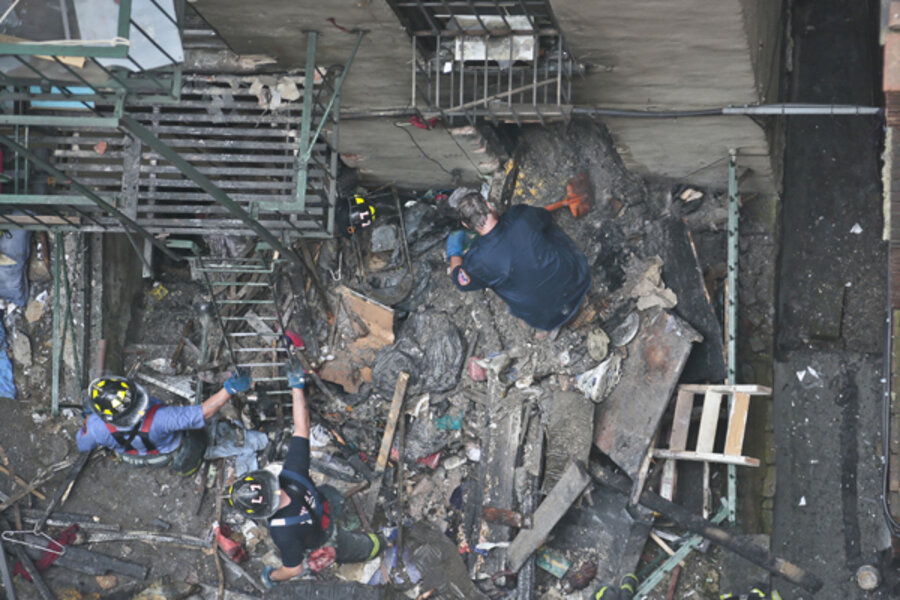New York building collapse follows explosion, injures 12
Loading...
| New York
An explosion inside a Chinatown building on Thursday led to a fire and a partial collapse, injuring a dozen people, including firefighters.
Three of those injured were hospitalized in serious condition. Injuries to the other people, including the four firefighters, were less severe and included burns.
Fire officials said several pesticide canisters, or so-called bug bombs, were found in the first floor rear apartment and may have exploded, but the cause of the blaze hadn't been determined. Investigators were also looking into a possible gas leak.
An emergency call about the fire at the five-story brick building, which has a bus company and other businesses on the first level and apartments above, came in around 12:45 p.m., the fire department said. The explosion and fire shattered windows on the first three floors.
When firefighters got to the scene, "we opened the front door and could see the fire in the back," fire Chief John Bley said. It was unclear what caused the explosion on the first floor, he said, and there was a minor collapse inside the building but nothing structural.
Building resident Tszkan Cheung, who had been in his fourth-floor apartment eating lunch at the time, described what he heard as "boom, like a bombing, like an earthquake."
He made it out of the building on his own but saw firefighters carrying out a woman with a severely injured leg.
Resident Jinjoo Yang, who lives next door, said, "I heard a big sound. It sounded like something big fell from the next floor. I felt the whole floor shaking."
She said gray smoke, smelling like gas, had come into her apartment.
Bley said one victim had to be taken out of a third-floor window.
The American Red Cross said it provided emergency housing for 28 adults and three children left homeless after a vacate order was issued for the building.
The fire was brought under control shortly after 1:30 p.m.







